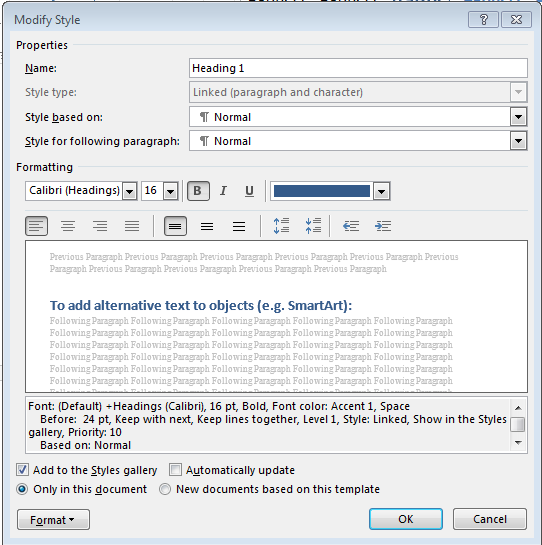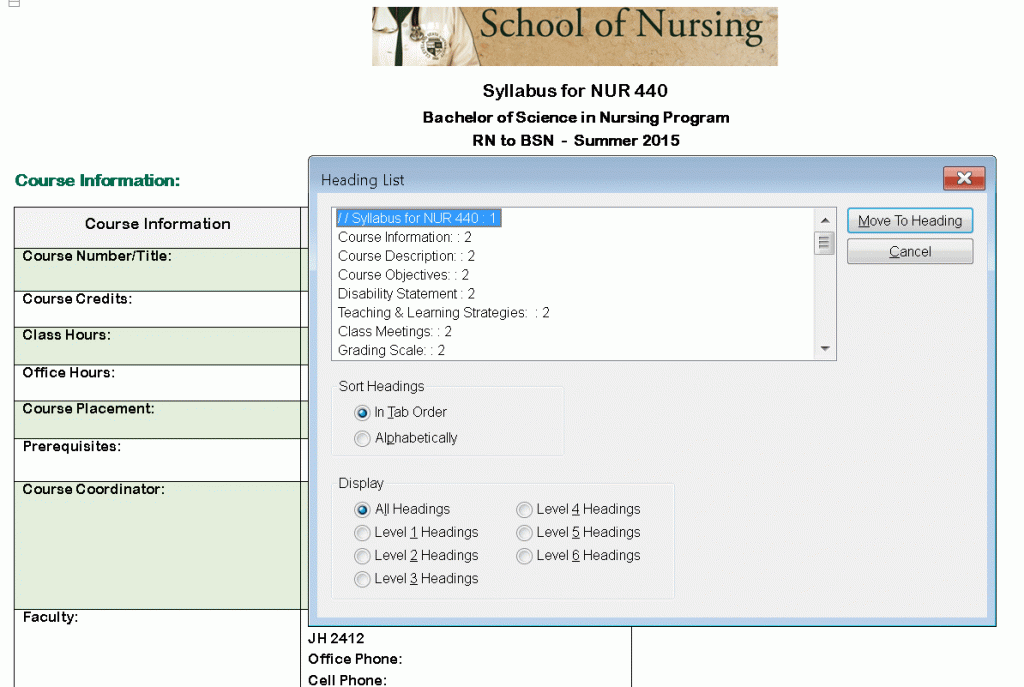
- #Creating accessible headings in microsoft word pdf#
- #Creating accessible headings in microsoft word Pc#
- #Creating accessible headings in microsoft word free#
Apply Heading Styles in Word 2013, 2010, 2007 You can go back to a previous heading level, if that best describes the hierarchy of your content, e.g. For example, a Heading 3 should be a child of Heading 2. Ordering Heading Stylesīe sure to use the heading levels in logical order based on the hierarchy in the document.
#Creating accessible headings in microsoft word pdf#
These structural heading tags will travel with the document when exported from Word as an HTML file and in some cases when exporting as a PDF file (see the Creating Accessible PDFs for Online Use tutorial page for more information on exporting to a PDF in the best manner to preserve accessibility settings). Use true styles in Word, such as Heading 1, Heading 2, Heading 3, etc. Do not simulate headings by just adding bold to text. Headings allow the screen reader user to scan a page or easily jump to the content they need. In fact it may be one of the most important things you can do to make your documents work well with assistive technology, such as screen readers.

The longer the page, the more important it is to use headings. In Word 2007, click on the Microsoft Office Button in the upper, left corner, point to Prepare, and then click Properties.Word 2013, Word 2010, from the File tab select Info and then Properties.Set an appropriate title for the document in Document Properties. When a document is first opened, screen readers will read the document title as opposed to the document name. Non-text elements, such as images have text descriptions.Structure of document remains intact so that screen readers read the document in correct order.Can be searched for headings, form fields, etc.Can be read from a screen reader and other assistive technologies for the disabled.You need to link to Open Office ( ) in your course materials to pass accessibility compliance.
#Creating accessible headings in microsoft word free#
With Open Office, students have a free program to access Word documents.Can be accessed without purchase of extra programs or readers.
#Creating accessible headings in microsoft word Pc#
This page will cover several things you can do to make Word documents more accessible and explore the Accessibility Checker in Word (added to the PC versions of Word, version 2010 and later).

When you save your document in another format for download, such as HTML or PDF, Word retains the headings styles, so everyone can still get the benefits of your headings.Īnd remember, when you’re writing headings, keep them short, specific to the information that follows them, and clear to someone new to the topic.įor more tips on creating accessible content, visit aka.ms/accessible.When creating Word documents to deliver online or otherwise require your students to access, it is important to make sure they work well with assistive technology so that disabled students can easily access the information. To add a heading style to text in Word, select the text, choose the Home tab in the ribbon, and in the Styles box, pick the heading style you want.


Screen readers and text-to-speech tools are programmed to recognize them. "Heading List Dialog, Headings List View, Reports Scope: 1, 1 of 9."īut this type of navigation works only when the document’s author uses heading styles. Many people use screen readers to create a list of headings, so they can skim the document to find the content they want. Clear, well-formatted headings can go a long way toward making sure your Word documents meet global accessibility standards.


 0 kommentar(er)
0 kommentar(er)
